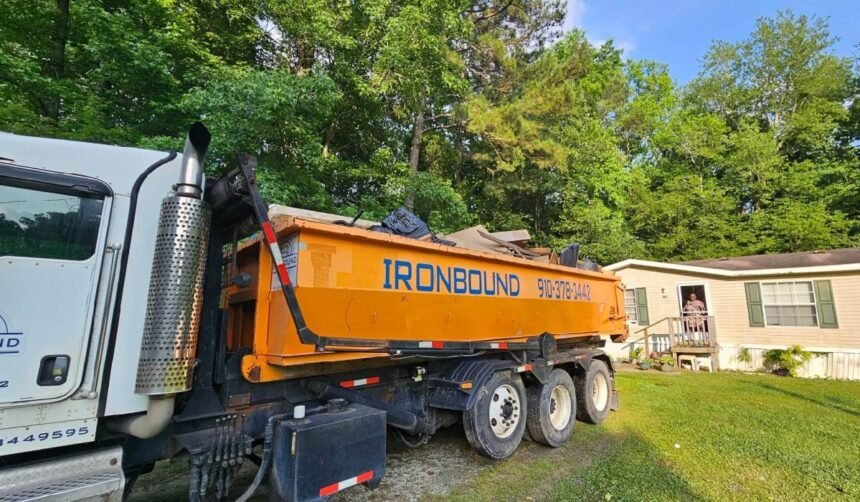When tackling a construction project, whether it’s a residential remodel or a large-scale commercial build, one constant challenge is managing waste efficiently. The debris generated from demolition, renovations, or new builds can quickly pile up, leading to cluttered workspaces, safety hazards, and logistical headaches. This is where a construction dumpster rental becomes a critical asset for contractors and project managers alike.
A well-planned waste management strategy not only ensures job site cleanliness but also keeps operations running smoothly, minimizes delays, and helps meet local disposal regulations. This guide will walk you through everything you need to know about construction dumpster rental—from selecting the right size to maximizing efficiency and staying compliant with waste regulations.
Why Proper Waste Management Matters in Construction
Construction projects generate a wide variety of waste materials: wood, drywall, metal, concrete, bricks, packaging materials, and sometimes even hazardous substances like asbestos or solvents. Without a structured system for disposal:
- Safety hazards increase due to tripping, sharp objects, or falling debris.
- Productivity drops as workers spend time moving waste rather than building.
- Legal complications can arise from improper disposal of regulated materials.
- Costs escalate through inefficient labor use, multiple hauls, or municipal fines.
A construction dumpster rental serves as a centralized, scalable, and reliable solution for collecting and disposing of construction waste, directly contributing to safer and more efficient work environments.
Choosing the Right Dumpster Size for Construction Projects
Selecting the right dumpster size is one of the most important steps in the rental process. Too small, and you’ll need multiple hauls; too large, and you’re paying for unused capacity.
Here are the most common sizes and their typical use cases:
- 10-yard dumpster
Ideal for small remodels or light demolition (e.g., removing a single wall, small bathroom renovations). Holds about 3 pickup truck loads. - 20-yard dumpster
Versatile for mid-sized projects like roofing, deck removals, or full kitchen renovations. Can hold up to 6 pickup truck loads. - 30-yard dumpster
Best for larger renovations, new home construction, or garage demolitions. Offers ample space for bulky and heavy materials. - 40-yard dumpster
Recommended for major construction and demolition jobs, commercial build-outs, or large cleanups. Can accommodate large volumes of waste with ease.
Tip: Always overestimate slightly rather than underestimate. Overfilling a dumpster can result in additional fees, or worse, delays due to overflow regulations.
Types of Construction Waste Suitable for Dumpsters
Dumpsters designed for construction projects are built to handle tough and heavy materials. Common items that can go into these dumpsters include:
- Drywall and plaster
- Concrete and asphalt (some providers offer dedicated dumpsters for these)
- Lumber and wood products
- Roofing shingles and tiles
- Metal scraps
- Bricks, stones, and dirt
- Insulation materials
- Flooring (carpet, tile, hardwood)
- Packaging materials like cardboard and plastic wrap
However, not all construction waste is allowed in standard dumpsters. The following items are often restricted:
- Paints, solvents, and adhesives
- Asbestos materials
- Hazardous chemicals and flammable liquids
- Tires, batteries, and electronic waste (e-waste)
- Compressed gas cylinders
Before finalizing your construction dumpster rental, confirm with the rental provider what materials are acceptable and if any special containers are required for hazardous or restricted items.
Placement and Site Preparation Tips
Where you place your dumpster matters as much as what goes in it. A poorly placed unit can slow down progress, damage property, or obstruct equipment and workers. Here’s how to do it right:
1. Choose a Flat, Sturdy Surface
Make sure the surface can handle the weight—especially when loaded. Concrete or gravel pads are ideal. Avoid soft ground, lawns, or uneven terrain.
2. Keep It Accessible
Place the dumpster close enough to the work area for easy disposal, but not so close that it blocks movement or presents hazards.
3. Leave Room for Pickup
Ensure there’s enough clearance for the dumpster truck to drop off and pick up the unit. A 60- to 80-foot straight path is often required.
4. Secure Permits If Needed
If your dumpster will sit on a public road or sidewalk, you may need a permit. Always check local regulations before delivery.
Maximizing Efficiency with Your Dumpster Rental
Getting a dumpster on site is only half the solution; how you use it determines your project’s cleanliness and efficiency.
1. Separate Waste When Possible
Organize materials by type—wood, metal, concrete, etc.—if your provider supports sorting. This can lower disposal costs and facilitate recycling.
2. Load Strategically
Place flat or heavy items on the bottom, then stack lighter, irregularly shaped waste on top. This maximizes space and keeps the dumpster balanced.
3. Monitor Fill Levels
Don’t exceed the “fill line.” Overflowing dumpsters are not only illegal in many jurisdictions but can also delay removal and result in fines.
4. Avoid Idle Time
Have your team use the dumpster consistently. Letting waste pile up around the site defeats the purpose of having a container.
Cost Considerations: What You’re Paying For
The price of a construction dumpster rental isn’t one-size-fits-all. Several variables determine how much you’ll pay:
- Dumpster size – Larger sizes cost more.
- Weight limits – Dumpsters have weight caps. Exceeding them incurs overage fees.
- Rental duration – Most companies offer 7-10 day rentals. Extra days cost more.
- Location and delivery logistics – Remote or hard-to-access sites may increase rates.
- Disposal fees – Based on your local landfill or recycling center rates.
- Special materials – Handling for heavy debris or restricted waste adds cost.
Always get a detailed quote, and ask for transparency around overage charges, weight limits, and pickup schedules.
Regulations and Environmental Responsibility
Disposing of construction waste responsibly is not only good for the environment—it’s the law in many areas. Local regulations may require sorting of recyclable materials like concrete or metal, and prohibit landfilling of reusable resources.
Contractors and site managers should:
- Use licensed dumpster providers that follow EPA and OSHA standards
- Avoid dumping hazardous or banned items
- Comply with state or municipal landfill regulations
- Reuse or recycle materials whenever possible
Some providers offer green dumpster rental services, which ensure that a large portion of the waste is sorted and diverted from landfills. This is especially beneficial for LEED-certified or eco-conscious building projects.
When to Schedule Your Rental
Timing your dumpster rental correctly ensures maximum productivity. Here’s a general guideline:
- Demolition-heavy projects – Schedule the dumpster for day one.
- Remodels or build-outs – Wait until demolition is done and construction debris begins to accumulate.
- Multi-phase jobs – You may need several dumpsters over the life of the project. Set up a rotation or recurring pickup.
Avoid last-minute bookings. During peak construction seasons, availability may be limited.
Red Flags to Watch Out For When Renting
Choosing the right dumpster provider is critical. Here are warning signs that a company might not be the best fit:
- Vague or unclear pricing
- No documentation on materials allowed
- Poor customer support or communication
- No visible licensing or permits
- Negative reviews or unreliable pickup/drop-off history
A trustworthy company will guide you through their process, explain the costs clearly, and provide support throughout your rental period.
Final Thoughts
Whether you’re overseeing a residential build or managing a commercial site, a construction dumpster rental is more than just a convenience—it’s a necessity for safety, efficiency, and compliance. It simplifies waste management, minimizes risks, and allows your team to focus on the work that matters most.
By understanding your needs, choosing the right size, following best practices, and working with a reputable rental provider, you can streamline your operations and maintain a clean, organized, and productive job site.









